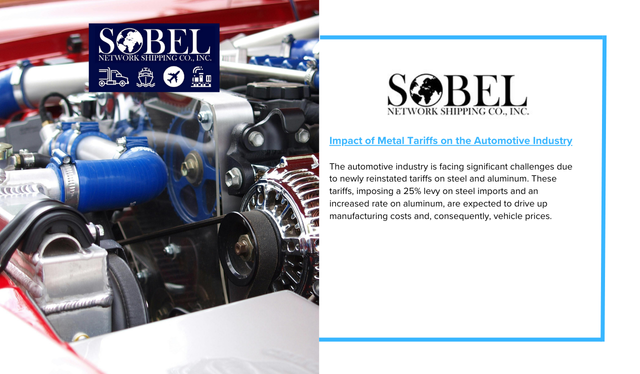The automotive industry is facing significant challenges due to newly reinstated tariffs on steel and aluminum. These tariffs, imposing a 25% levy on steel imports and an increased rate on aluminum, are expected to drive up manufacturing costs and, consequently, vehicle prices.
Steel and aluminum constitute a substantial portion of modern vehicle production, with steel accounting for nearly half of a car’s weight and aluminum becoming an increasingly vital material due to its lightweight properties. Industry analysts predict that these tariffs could add an estimated $400 in costs per vehicle, a burden that may ultimately be passed on to consumers.
One of the key concerns lies in the reliance on imported aluminum. The domestic production of high-quality aluminum has declined, forcing automakers to depend on foreign suppliers, particularly for automotive-grade aluminum used in vehicle exteriors. While steel sourcing remains more domestic, the impact of aluminum tariffs presents a long-term supply chain challenge.
Automakers have been working to mitigate these effects by stockpiling materials and seeking alternative suppliers. However, shifting supply chains to rely solely on domestic production is a process that would take years. The uncertainty surrounding these tariffs has led to concerns about overall market stability and potential disruptions in vehicle manufacturing.
Previous instances of similar tariffs resulted in volatile pricing within the steel and aluminum markets. Initial price hikes led to increased production investments by steel manufacturers, but this was followed by demand fluctuations and overproduction, ultimately impacting profitability in the industry.
The growing adoption of electric vehicles has further increased the need for aluminum, as automakers incorporate more lightweight materials to offset the weight of battery systems. With domestic aluminum production declining and demand on the rise, industry leaders continue to seek solutions that balance costs while maintaining the efficiency and performance of vehicles.
The broader economic impact of these tariffs extends beyond the automotive industry, influencing trade relations and supply chain strategies across multiple sectors. The ability of manufacturers to adapt to these changes will play a crucial role in determining the future landscape of vehicle production and pricing in the coming years.


